
Transport and Communications Science Journal, Vol. 76, Issue 01 (01/2025), 42-52
42
Transport and Communications Science Journal
ANALYSIS OF FACTORS INFLUENCING BRT PERFORMANCE
AND PROPOSAL OF APPROPRIATE OPTIONS FOR THE BRT
SYSTEM IN HO CHI MINH CITY
Nguyen Thi Bich Hang*, Nguyen Van Dung
University of Transport and Communications, No 3 Cau Giay Street, Hanoi, Vietnam
ARTICLE INFO
TYPE: Research Article
Received: 15/09/2024
Revised: 04/10/2024
Accepted: 10/01/2025
Published online: 15/01/2025
https://doi.org/10.47869/tcsj.76.1.4
* Corresponding author
Email: hangntb_ph@utc.edu.vn; Tel: +84903039092
Abstract. The success of BRT systems in cities such as Curitiba (Brazil), Bogotá (Colombia),
Jakarta (Indonesia), Guangzhou, Beijing, Kunming (China), and Seoul (South Korea) has
inspired the widespread adoption of the BRT model. However, popularize BRT systems
worldwide has not always yielded successful outcomes, as evidenced by the dismantling of
BRT systems in New Delhi (India), Bangkok (Thailand), and Kuala Lumpur (Malaysia) due
to operational inefficiencies. This highlights the necessity of customizing BRT systems to suit
the unique conditions of each city. This paper presents an analysis of the urban context of Ho
Chi Minh City, addressing factors such as population distribution, land use, travel behavior,
and the current state of transport infrastructure, to propose a BRT model optimized for the
city’s specific conditions. The proposed result is a small-capacity BRT system with dedicated
lanes shared with regular buses and open stations serving each direction is the most
appropriate solution for the city. These research findings can be applied in the design of future
BRT routes in Ho Chi Minh City.
Keywords: BRT, population distribution, travel behavior, transport infrastructure, operational
capacity
@ 2025 University of Transport and Communications

Transport and Communications Science Journal, Vol. 76, Issue 01 (01/2025), 42-52
43
1. INTRODUCTION
Bus Rapid Transit (BRT) represents a form of high-capacity public transport that offers
lower investment costs, greater flexibility, and easier operation compared to Mass Rapid
Transit (MRT). Due to these benefits, BRT has become a popular transport option in many
cities, particularly in developing countries with limited resources [1], [2], [3].
A BRT system is defined as a bus service operating in dedicated lanes with specific
enhancements designed to provide faster, more reliable service than conventional regular bus
systems. According to the Institute for Transportation and Development Policy (ITDP) [4], a
system can be classified as BRT if it meets the following minimum criteria:
• A route length of at least 3 km (1.9 miles);
• At least 4 points for dedicated bus lanes;
• At least 4 points for the location of dedicated lanes;
• A minimum score of 20/38 for key BRT components.
The core elements of a BRT system are scored as follows [4]:
• Dedicated bus lanes: 8 points;
• Location of lanes: 8 points;
• Intersection priority: 7 points;
• Fare collection at stations: 8 points;
• Level boarding (alignment of bus and platform): 7 points.
Thus, within a scoring range of 4-8 for each element, the Bus Rapid Transit (BRT)
system offers various options depending on the technical infrastructure, executive capacity,
and traffic management conditions. These technical improvements are primarily aimed at
enhancing service quality, ensuring that bus passenger experience faster, more reliable, and
more convenient transportation compared to regular bus services.
In addition to these technical enhancements, selecting appropriate features for the BRT
system must be aligned with the level of travel demand generation, travel behavior, and
passenger flow characteristics to achieve high operational efficiency. Depending on the
degree of technical enhancement, each BRT system will have a different capacity. "Full BRT"
systems, with maximum enhancements for all elements, can carry between 100,000 and
500,000 passengers a day, making them effective for corridors with high passenger density
and concentrated demand [1], [5]. Conversely, in corridors with lower travel demand, this
capacity would be underutilized, resulting in inefficiency. In such cases, “lite BRT” systems
with a capacity of 35,000-50,000 passengers a day would be a more suitable option, ensuring
resource efficiency without creating excess capacity [3], [5].
In essence, high technical standards do not guarantee the success of a BRT system. The
efficiency of such a system hinges on its compatibility with local conditions. Hence, the
choice of type and technical standards when designing and constructing BRT systems in
urban areas must be based on careful analysis of trip generation, passenger flow
characteristics, infrastructure conditions, and the operational capacity of the local
transportation system. This paper presents such an analysis for Ho Chi Minh City.

Transport and Communications Science Journal, Vol. 76, Issue 01 (01/2025), 42-52
44
Ho Chi Minh City stands as one of the largest and most dynamic urban centers in
Vietnam, with a population exceeding 10 million and a daily demand for over 25 million trips.
Presently, the city's public transportation system is including roundly 100 bus routes and
satisfies only about 5% of the travel demand of residents. According to the urban
transportation development plan to 2030, the construction of 06 MRT lines and 06 BRT lines
is anticipated to fulfil 25% of the travel demand. Consequently, it is necessary to conduct
studies that offer recommendations for the design and implementation of BRT lines in Ho Chi
Minh City, ensuring they align with the city's unique conditions. This approach is required to
avoid the fallibility encountered by the Hanoi BRT system, which has notably reduced the
operational effectiveness of BRT Line 1 in Hanoi [5].
2. IDENTIFYING FACTORS INFLUENCING BRT PERFORMANCE
2.1. Trip generation and passenger flow characteristics
The BRT system, as a high-capacity public transportation mode, relies primarily on the
level of trip generation and passenger flow for its operational efficiency. With technical
improvements, BRT buses significantly enhance their carrying capacity and speed compared
to regular buses. Therefore, BRT systems will be most effective in corridors with high and
concentrated travel demand. High-density travel demand is crucial for maximizing vehicle
capacity, reducing headways, and minimizing accessibility time, thereby increasing the
attractiveness of the transportation service and increasing the passenger volume on BRT
routes.
Travel demand is closely tied to population distribution and land use regulations in urban
areas [6], [7], [8]. Different urban development patterns, such as "compact city" versus urban
sprawl, specialized versus mixed land use, and circumscribed versus increased land use
intensity, lead to varying outcomes in terms of trip generation [9].
Cities with a sprawling development model, characterized by functionally specialized
land use and low-intensity development, tend to generate an increased number and length of
trips [7]. However, these trips are often dispersed over a wide area, making shared
transportation modes less practical. As a result, these cities tend to rely heavily on private
vehicles, with public transportation struggling to achieve efficiency. Traditional urban
development concepts in such cities aim primarily to make private vehicles circulate
smoothly, minimizing traffic congestion. Indicators of transportation system success in these
cities often focus on road infrastructure metrics, such as road network density, the number and
length of road segments, and the number and area of parking lots. This model is more suitable
for low population density cities, where private vehicles are the dominant form of
transportation, rendering public transportation including “full BRT” systems largely
ineffective.
The city becomes big city and densely populated when a it is population exceeds 1
million. At that time, expanding transportation infrastructure often lags behind the growth in
private vehicle, making traffic congestion inevitable. In response, many megacities and
densely populated cities are transitioning to the "compact city" model, characterized by urban
development by height in limited areas, mixed land use, and higher land use intensity [10],
[11]. This minimizes travel demand generation and concentrates demand at major attraction
points, facilitating the use of shared transport modes. In compact cities, residents’ travel
demand tends to concentrate around MRT or BRT stations, with mass-public transport modes

Transport and Communications Science Journal, Vol. 76, Issue 01 (01/2025), 42-52
45
serving the majority of travel demand. Transportation systems in these cities prioritize
meeting passenger demand, shifting the focus from addressing vehicle traffic issues to
improving passenger services. This urban development method, known as transit-oriented
development (TOD), integrates transportation and urban development. High-standard BRT
systems, with their large carrying capacities, are particularly effective in these urban areas
[12].
Each city should base its decisions on its unique characteristics of population distribution
and land use, selecting the appropriate service capacity and technical standards for the BRT
system to avoid scenarios where high-capacity routes are built but serve low passenger
volumes or vice versa [13].
2.2. Dedicated bus lanes
The primary distinction between rapid buses and regular buses lies in the speed and
reliability of the transportation service. Dedicated lanes and signal prioritization at
intersections are crucial for ensuring that buses move quickly and adhere to schedules. Thus,
dedicated lanes are a fundamental requirement for establishing a BRT system [4]. To create
these lanes, street widths must be sufficient typically at least three lanes in each direction.
Additionally, various options exist regarding the location and usage rights of dedicated lanes.
Placing dedicated lanes in the center of a roadway offers the most operational benefits for
BRT systems, as it ensures higher bus speeds and minimizes conflicts with other traffic.
However, accessing stations becomes more difficult for passengers compared to lanes
adjacent to sidewalks. Therefore, when determining the location of dedicated BRT lanes, both
infrastructure conditions and traffic flow characteristics must be considered. For purely
automobile traffic flows, the arrangement of BRT lanes close to the roadside will be more
convenient than for mixed traffic flows with two-wheeled vehicles dominating, as in most
Asian cities.
a) Dedicated lanes close to the roadside
b) Dedicated lanes in the center
Figure 1. Dedicated lanes for BRT [4].
The usage rights of dedicated lanes also influence BRT system performance. If regular
buses are not allowed to share the dedicated lane with BRT vehicles, the BRT’s operational
speed and carrying capacity will be higher. However, allowing regular buses to share the
dedicated lane can improve passenger access to the BRT corridor, as regular buses can collect
passengers and feed them into the BRT system efficiently. Therefore, in corridors with high
passenger volumes where speed and capacity are the priority, exclusive use of the lane by
BRT buses is optimal. In contrast, in corridors with lower passenger volumes where
increasing ridership is a priority, allowing regular buses to share the dedicated lane is

Transport and Communications Science Journal, Vol. 76, Issue 01 (01/2025), 42-52
46
advisable.
2.3. Traffic signal priority for buses at intersections
Enhancing bus speed in dedicated lanes becomes futile if buses experience congestion at
intersections, particularly in urban networks with numerous at-grade crossings. Therefore,
investment in centralized traffic signal control systems that prioritize buses at intersections
while costly is essential to improving operational speeds and enhancing the overall efficiency
of BRT systems.
The level of priority given to buses should correlate with their load factor: buses with
higher occupancy rates should receive greater signal priority. Conversely, during off-peak
hours or for buses with lower occupancy, priority can be reduced to minimize disruption to
general traffic flow. Such decisions depend largely on overall urban traffic management
capabilities rather than on the BRT system alone.
2.4. Automated fare collection system
To enhance the speed and accuracy of services, BRT systems typically utilize automated
fare collection (AFC) systems. As payment methods become increasingly diverse and
convenient, the AFC process becomes more efficient. However, the location of the payment
systems whether at the station or on the vehicle has a significant impact on the operational
efficiency of the BRT system. Placing the AFC system on the bus reduces both investment
and operational costs. However, with high passenger volumes, this setup may slow down the
boarding and alighting process, thereby reducing the operational speed of the buses. On the
other hand, installing the fare collection system at the station allows for faster boarding and
alighting, reducing the dwell time of the BRT vehicle at the station, which improves time
efficiency. This approach, however, incurs additional costs for the installation and operation
of fare collection systems at the stations, including substantial expenses for staffing and
security to manage these systems.
a) AFC system on the bus
b) AFC system at the station
Figure 2. AFC systems for BRT [4].
2.5. BRT station
Location and structure of the BRT station plays a crucial role in influencing the operation
of the BRT system. Key factors such as whether the station is positioned at the median or side
curb, whether it is close or open station, and whether the platform is high or low are critical
for ensuring smooth and efficient BRT system functioning. High-capacity BRT systems
generally require enclosed station models integrated with fare control systems at the stations







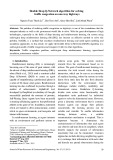



![Bài giảng Quản lý vận hành và bảo trì công trình xây dựng [chuẩn nhất]](https://cdn.tailieu.vn/images/document/thumbnail/2025/20251006/agonars97/135x160/30881759736164.jpg)


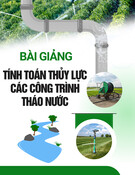
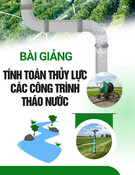
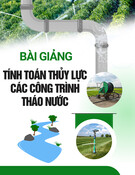
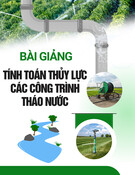
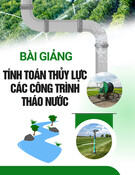
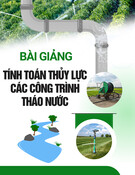
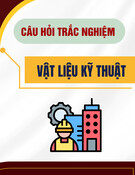
![Ngân hàng câu hỏi trắc nghiệm Sức bền vật liệu 1: [Mô tả/Định tính Thêm để Tăng CTR]](https://cdn.tailieu.vn/images/document/thumbnail/2025/20250920/kimphuong1001/135x160/6851758357416.jpg)

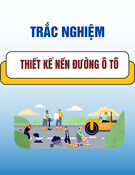
![Trắc nghiệm Kinh tế xây dựng [chuẩn nhất]](https://cdn.tailieu.vn/images/document/thumbnail/2025/20250920/kimphuong1001/135x160/32781758338877.jpg)

